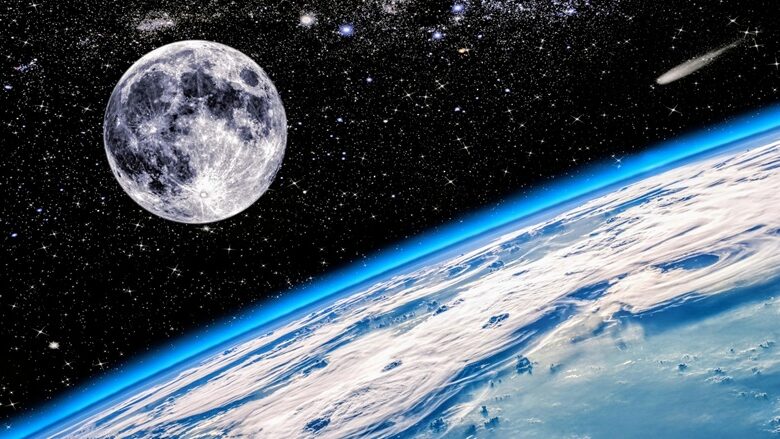A fresh origin tale: A daring new account of how Earth acquired its Moon.
News Mania Desk \ Piyal Chatterjee \ 20th january 2025

One of the leading theories suggests that the Moon originated from a collision between the primitive Earth and the protoplanet Theia; however, researchers from the University of Gottingen and the Max Planck Institute for Solar System Research have now indicated it might have formed from material expelled from the Earth’s mantle. The results also suggest an intriguing evolution on Earth — water. The research suggests that water might have arrived on Earth during its formative stages and may not have been introduced by later collisions.
“One explanation is that Theia lost its rocky mantle in earlier collisions and then slammed into the early Earth like a metallic cannonball. If this were the case, Theia would be part of the Earth’s core today, and the Moon would have formed from ejected material from the Earth’s mantle. This would explain the similarity in the composition of the Earth and the Moon,” Professor Andreas Pack, Managing Director of Gottingen University’s Geoscience Centre and Head of the Geochemistry and Isotope Geology Division said.
The team examined oxygen isotopes from 14 lunar samples and conducted 191 measurements on Earth minerals. Isotopes are types of the same element that vary solely in their nucleus weight. The recent measurements indicate a remarkable similarity between samples collected from both the Earth and the Moon of an isotope known as oxygen-17 (17O).
The information additionally provides perspectives on the history of water on Earth. A prevalent theory posits that water reached Earth following the formation of the Moon, through a sequence of collisions referred to as the “Late Veneer Event.”
Because Earth underwent these impacts much more often than the Moon, noticeable differences in oxygen isotopes should be present, indicating the source of the impacting material. The team excluded meteor impact as a source of water’s origin in the research published in Proceedings of the National Academy of Sciences.






